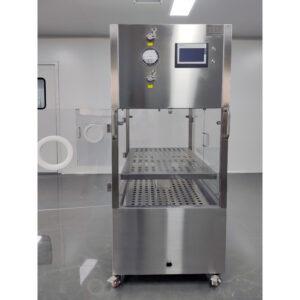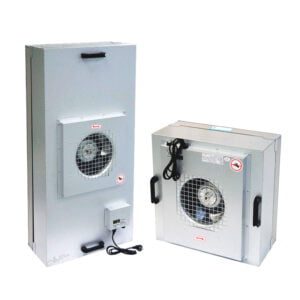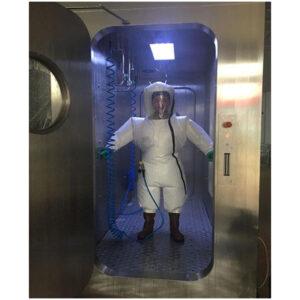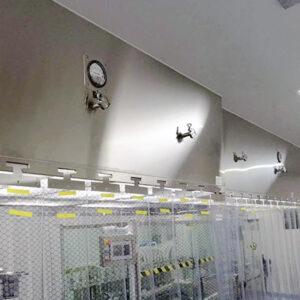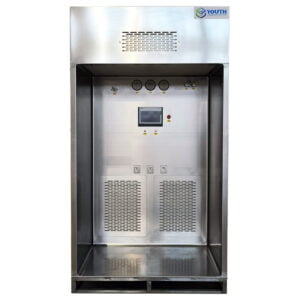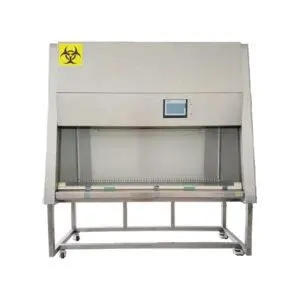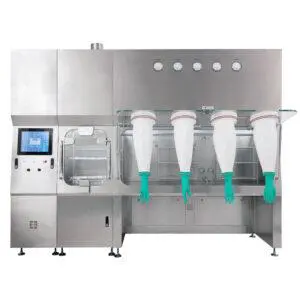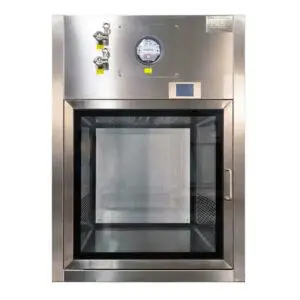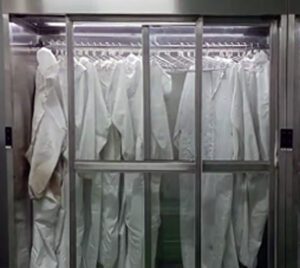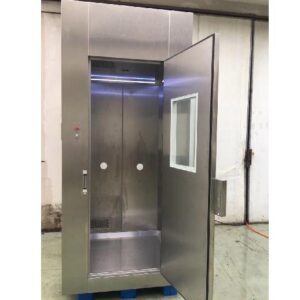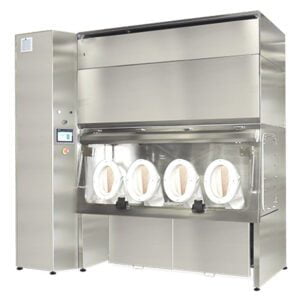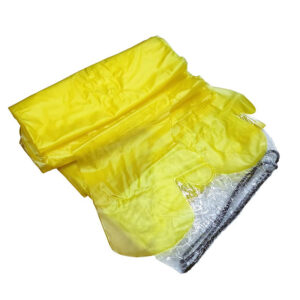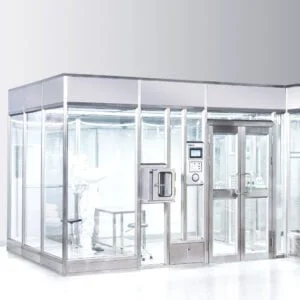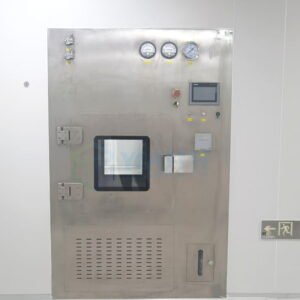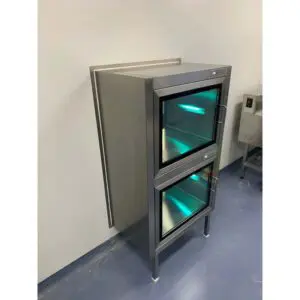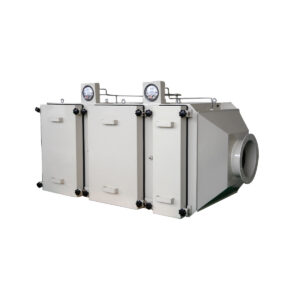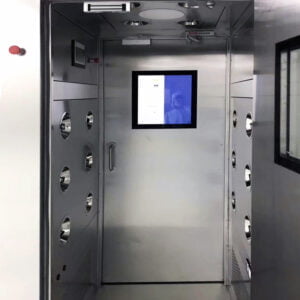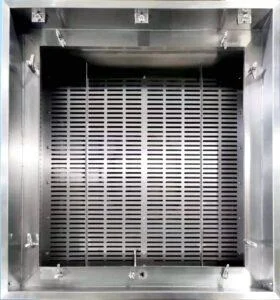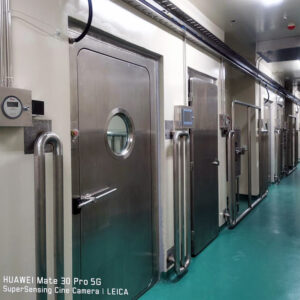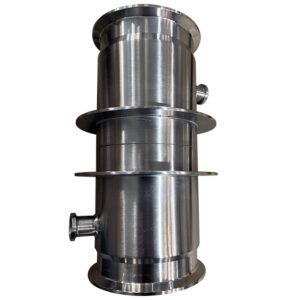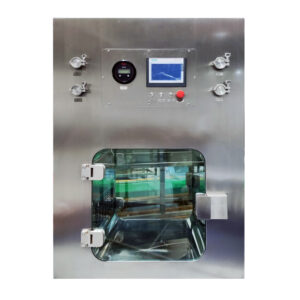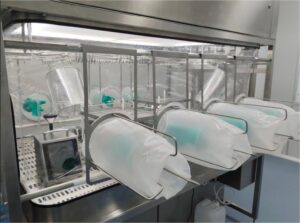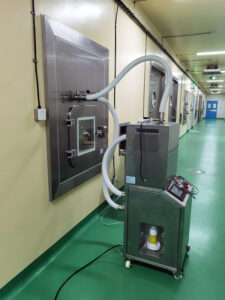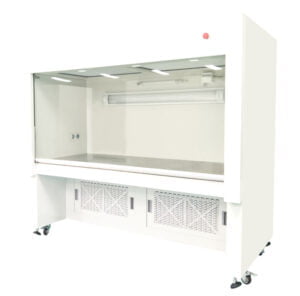As we step into 2025, the world of pharmaceutical manufacturing and laboratory testing continues to evolve rapidly. At the forefront of this evolution are glove sterility test isolators, sophisticated pieces of equipment that have become indispensable in ensuring the sterility and safety of pharmaceutical products. These isolators represent a critical intersection of cutting-edge technology and stringent regulatory requirements, playing a pivotal role in maintaining the integrity of sterile environments.
Glove sterility test isolators have revolutionized the way we approach sterility testing in pharmaceutical and biotechnology industries. By providing a controlled, aseptic environment, these isolators minimize the risk of contamination during critical testing procedures. As we delve deeper into this topic, we'll explore the latest advancements, key features, and best practices that make these isolators an essential component of modern sterility testing protocols.
In this comprehensive guide, we'll navigate through the intricacies of glove sterility test isolators, examining their design principles, operational procedures, and the stringent regulations that govern their use. From automated glove testing systems to integrated VHP generators, we'll uncover the technological marvels that ensure the highest standards of sterility and safety in pharmaceutical manufacturing.
Glove sterility test isolators are paramount in maintaining aseptic conditions during pharmaceutical sterility testing, significantly reducing the risk of false positives and ensuring product safety.
What Are the Key Components of Glove Sterility Test Isolators?
Glove sterility test isolators are complex systems designed to create and maintain a sterile environment for conducting crucial tests in pharmaceutical manufacturing. At their core, these isolators consist of several key components working in harmony to ensure the highest level of sterility and functionality.
The primary components include the isolator chamber, glove ports, transfer systems, and environmental control systems. Each element plays a vital role in maintaining the aseptic conditions necessary for accurate sterility testing.
One of the most critical aspects of these isolators is the glove system itself. High-quality, leak-resistant gloves are essential for maintaining the integrity of the sterile environment while allowing operators to manipulate samples and equipment inside the isolator.
Modern glove sterility test isolators incorporate advanced materials and designs that significantly enhance durability and reduce the risk of glove breaches, a critical factor in maintaining sterility.
| Component | Function | Material |
|---|---|---|
| Isolator Chamber | Maintains sterile environment | Stainless steel, glass |
| Glove Ports | Allow operator access | Flexible, durable polymers |
| Transfer Systems | Enable material ingress/egress | Stainless steel, specialized plastics |
| Environmental Control | Regulate temperature, pressure, humidity | Electronic sensors, HEPA filters |
The integration of these components creates a sophisticated system that not only ensures sterility but also enhances operator safety and efficiency. As we continue to advance in isolator technology, the seamless interaction between these components becomes increasingly crucial in meeting the stringent demands of pharmaceutical manufacturing and testing.
How Do Automated Glove Testing Systems Enhance Isolator Performance?
Automated glove testing systems have revolutionized the way we approach sterility maintenance in isolators. These systems provide a level of precision and reliability that was previously unattainable with manual testing methods.
By incorporating wireless technology and advanced sensors, automated glove testing systems can simultaneously test multiple gloves, significantly reducing the time required for integrity checks. This efficiency not only improves workflow but also minimizes the risk of human error in the testing process.
The implementation of automated systems aligns perfectly with current Good Manufacturing Practices (cGMP) and regulatory requirements. These systems often come with built-in data logging and reporting features, ensuring compliance with 21 CFR Part 11 and other relevant standards.
Automated glove testing systems can detect micro-breaches as small as 10 micrometers, providing an unprecedented level of assurance in glove integrity and overall isolator sterility.
| Feature | Benefit | Compliance |
|---|---|---|
| Wireless Operation | Reduced contamination risk | cGMP |
| Simultaneous Testing | Improved efficiency | FDA guidelines |
| Data Logging | Enhanced traceability | 21 CFR Part 11 |
| Micro-breach Detection | Increased sterility assurance | USP, EP standards |
The YOUTH brand has been at the forefront of developing these automated systems, recognizing their importance in maintaining the highest standards of sterility in pharmaceutical manufacturing. Their commitment to innovation has significantly contributed to the advancement of isolator technology.
What Role Does VHP Generation Play in Sterility Test Isolators?
Vaporized Hydrogen Peroxide (VHP) generation is a cornerstone of modern sterility test isolators. This powerful sterilization method ensures that the isolator environment remains free from microbial contamination, a critical factor in conducting accurate sterility tests.
Integrated VHP generators have become a standard feature in advanced isolator systems. These generators produce a fine mist of hydrogen peroxide that penetrates every nook and cranny of the isolator, effectively sterilizing all surfaces.
The VHP cycle typically consists of four phases: dehumidification, conditioning, sterilization, and aeration. Each phase is carefully controlled to ensure optimal sterilization efficacy while protecting sensitive equipment and materials within the isolator.
Studies have shown that VHP sterilization can achieve a 6-log reduction in microbial populations within minutes, making it one of the most effective methods for maintaining sterility in isolator environments.
| VHP Phase | Duration | Purpose |
|---|---|---|
| Dehumidification | 10-15 minutes | Removes moisture |
| Conditioning | 5-10 minutes | Builds up H2O2 concentration |
| Sterilization | 15-30 minutes | Eliminates microorganisms |
| Aeration | 30-60 minutes | Removes residual H2O2 |
The integration of VHP technology in glove sterility test isolators represents a significant advancement in aseptic processing. It provides a level of sterility assurance that is crucial for the pharmaceutical industry, ensuring that products are manufactured and tested under the most stringent conditions possible.
How Do Control Systems Contribute to Isolator Efficiency and Compliance?
Advanced control systems are the brains behind modern glove sterility test isolators, orchestrating the complex operations required to maintain a sterile environment. These systems, often based on Programmable Logic Controllers (PLCs), manage everything from environmental parameters to sterilization cycles.
Siemens PLCs are commonly used in high-end isolators due to their reliability and versatility. These controllers enable precise regulation of temperature, pressure, and humidity within the isolator, ensuring optimal conditions for sterility testing.
Moreover, these control systems play a crucial role in compliance with regulatory standards. They provide real-time monitoring, data logging, and reporting capabilities that are essential for meeting GMP, USP, and EP regulations.
Advanced control systems in sterility test isolators can maintain pressure differentials as precise as ±0.5 Pa, crucial for preventing contamination and ensuring the validity of sterility tests.
| Control Feature | Function | Regulatory Impact |
|---|---|---|
| Environmental Monitoring | Maintains optimal conditions | GMP compliance |
| Data Logging | Records operational parameters | Traceability for audits |
| Alarm Systems | Alerts operators to deviations | Ensures prompt corrective actions |
| User Authentication | Controls access to critical functions | 21 CFR Part 11 compliance |
The sophisticated control systems in Glove sterility test isolators not only enhance operational efficiency but also provide the necessary documentation and control measures to meet the stringent requirements of regulatory bodies worldwide.
What Are the Latest Innovations in Glove Port Design?
Glove ports are perhaps the most critical interface in sterility test isolators, serving as the primary point of interaction between operators and the sterile environment. Recent innovations in glove port design have significantly enhanced both safety and functionality.
One of the most notable advancements is the development of rapid transfer ports (RTPs) integrated with glove systems. These allow for quick and safe glove changes without compromising the sterile environment, reducing downtime and minimizing the risk of contamination.
Materials science has also played a crucial role in improving glove port design. New polymer blends offer increased durability and flexibility while maintaining excellent barrier properties against microbial ingress.
Advanced glove port designs can now withstand over 20,000 manipulation cycles without losing integrity, a significant improvement over previous generations that typically lasted for 5,000-10,000 cycles.
| Feature | Benefit | Material |
|---|---|---|
| Rapid Transfer Ports | Quick glove changes | Specialized polymers |
| Ergonomic Design | Reduced operator fatigue | Flexible elastomers |
| Leak Detection Systems | Enhanced safety | Integrated sensors |
| Anti-microbial Coatings | Additional contamination protection | Silver-infused polymers |
These innovations in glove port design are not just incremental improvements; they represent a paradigm shift in how we approach operator interaction with sterile environments. By enhancing safety, efficiency, and ergonomics, these advancements contribute significantly to the overall effectiveness of glove sterility test isolators.
How Do Transfer Systems Impact Sterility Assurance?
Transfer systems are the gateways through which materials enter and exit the sterile environment of glove sterility test isolators. The design and operation of these systems are critical in maintaining the integrity of the aseptic space.
Modern isolators often feature multiple transfer systems, including rapid transfer ports (RTPs), airlocks, and pass-through chambers. Each of these systems is designed to minimize the risk of contamination during material transfer.
Alpha-beta port systems have gained popularity due to their ability to maintain a sterile connection between the isolator and external environment. These systems use a double-door mechanism that ensures one door is always closed, effectively preventing contamination.
Advanced transfer systems can achieve a sterility assurance level (SAL) of 10^-6, meaning there's only a one in a million chance of a single viable microorganism being present after the transfer process.
| Transfer System | Mechanism | Sterilization Method |
|---|---|---|
| Rapid Transfer Ports | Double-door system | VHP or UV |
| Airlocks | Pressure differential | HEPA filtration |
| Pass-through Chambers | Interlocked doors | Chemical sterilization |
| Alpha-Beta Ports | Mating flange design | VHP cycle |
The development of sophisticated transfer systems has significantly contributed to the overall sterility assurance of isolator operations. By providing secure and efficient means of material ingress and egress, these systems play a crucial role in maintaining the sterile environment necessary for accurate sterility testing.
What Are the Regulatory Considerations for Glove Sterility Test Isolators?
Regulatory compliance is a paramount concern in the pharmaceutical industry, and glove sterility test isolators are subject to rigorous standards and guidelines. Understanding and adhering to these regulations is crucial for manufacturers and end-users alike.
Key regulatory bodies influencing isolator design and operation include the FDA, EMA, and WHO. These organizations provide guidelines on Good Manufacturing Practices (GMP), which directly impact isolator specifications and operational procedures.
Specific standards such as ISO 14644-7 and EU GMP Annex 1 provide detailed requirements for isolator design, validation, and monitoring. Compliance with these standards is essential for ensuring the reliability and acceptability of sterility test results.
Recent updates to EU GMP Annex 1 in 2023 have placed increased emphasis on contamination control strategies, requiring isolator systems to demonstrate more robust sterility assurance measures.
| Regulatory Body | Standard/Guideline | Key Focus Areas |
|---|---|---|
| FDA | 21 CFR Part 11 | Electronic records, signatures |
| EMA | EU GMP Annex 1 | Sterile product manufacture |
| ISO | ISO 14644-7 | Separative devices (clean air hoods, gloveboxes, isolators) |
| USP | <797> | Sterile compounding |
Staying abreast of these regulatory requirements is not just about compliance; it's about ensuring the highest standards of product safety and quality. As regulations continue to evolve, so too must the design and operation of glove sterility test isolators to meet these ever-increasing standards.
How Does Operator Training Impact Isolator Performance?
The effectiveness of glove sterility test isolators is not solely dependent on their technological sophistication; the skill and knowledge of the operators play an equally crucial role. Comprehensive and ongoing training is essential to ensure that these complex systems are used correctly and efficiently.
Operator training programs typically cover a wide range of topics, including aseptic technique, glove changing procedures, transfer system operation, and emergency protocols. Advanced training may also include troubleshooting and basic maintenance procedures.
Virtual reality (VR) and augmented reality (AR) technologies are increasingly being incorporated into training programs. These tools allow operators to practice complex procedures in a simulated environment, reducing the risk of errors in actual sterile environments.
Studies have shown that implementing comprehensive operator training programs can reduce contamination incidents by up to 70% and improve overall isolator efficiency by 25%.
| Training Component | Purpose | Delivery Method |
|---|---|---|
| Aseptic Technique | Prevent contamination | Hands-on practice |
| Equipment Operation | Ensure proper use | Simulation and live demos |
| Emergency Procedures | Prepare for contingencies | Scenario-based training |
| Documentation | Maintain compliance | Classroom and practical sessions |
Investing in thorough operator training is not just a regulatory requirement; it's a strategic decision that directly impacts the performance and reliability of glove sterility test isolators. Well-trained operators are the linchpin in maintaining the sterility and integrity of these critical systems.
In conclusion, glove sterility test isolators stand as a testament to the incredible advancements in pharmaceutical manufacturing and testing. As we've explored throughout this guide, these sophisticated systems integrate cutting-edge technology with stringent regulatory compliance to ensure the highest standards of sterility and product safety.
From automated glove testing systems to advanced VHP generation and innovative control mechanisms, every aspect of modern isolators is designed to minimize contamination risks and maximize efficiency. The continuous evolution of glove port designs and transfer systems further enhances the capabilities of these critical pieces of equipment.
As we look towards the future, it's clear that the role of glove sterility test isolators will only grow in importance. With increasing regulatory scrutiny and the ever-present need for safer, more effective pharmaceutical products, these isolators will continue to be at the forefront of aseptic processing and sterility testing.
The commitment to innovation demonstrated by companies like YOUTH, coupled with rigorous operator training and adherence to evolving regulatory standards, ensures that glove sterility test isolators will remain an indispensable tool in the pharmaceutical industry for years to come. As we embrace these technological marvels, we move closer to a future where contamination in sterility testing becomes a thing of the past, paving the way for safer, more reliable pharmaceutical products for all.
External Resources
Sterility Test Isolator – Design, Construction and Examples – This resource provides detailed information on the design, construction, and features of sterility test isolators, including glove sterility test isolators with integrated VHP generators and automatic control systems.
Extras Isolator technology Glove testing system – This page describes a glove testing system for isolators and RABS, highlighting features such as pressure decay tests, WiFi interface, simultaneous testing of multiple gloves, and compliance with GMP guidelines.
Customized Sterility Test Isolator Suppliers, Manufacturers – TAILIN – TAILIN offers sterility test isolators with advanced features like built-in VHPS generators, Siemens PLC control, and integrated sterility test pumps, ensuring compliance with GMP, USP, and EP regulations.
Sterility Testing Isolator for quality control – ST-IS – Tema Sinergie – This resource details the ST-IS sterility testing isolator, which includes an integrated VPHP system, automatic glove leak testing, and compliance with international standards such as ISO 14644-7 and EU Guidelines.
WirelessGT 2 – SKAN – The SKAN WirelessGT 2 is a fully automated glove testing system that complies with cGAMP specifications, offering features like wireless operation, simultaneous testing of multiple gloves, and compliance with 21 CFR Part 11.
Glove Testing Systems for Isolators and RABS – Pharmaceutical Technology – This article discusses the importance of glove integrity testing in isolators and RABS, highlighting various systems and technologies used to ensure compliance and safety in pharmaceutical environments.
Sterility Testing Isolators: Ensuring Aseptic Conditions – LabX – This resource provides an overview of sterility testing isolators, focusing on their design, functionality, and the importance of maintaining aseptic conditions during sterility testing.
Isolator Technology for Sterility Testing – International Society for Pharmaceutical Engineering (ISPE) – This ISPE resource covers the latest advancements in isolator technology for sterility testing, including best practices, regulatory compliance, and case studies on effective implementation.
Related Contents:
- Custom Sterility Test Isolators: Top 5 Designs 2025
- Flexible Wall Isolators: Cost-Effective Sterility Testing
- Modular Sterility Testing Isolators: Flexible Solutions
- VHP Isolators: Advanced Containment for Sterile Environments
- Cleanroom Material Transfer: Best Practices
- VHP Passbox Controls: Automation and Monitoring
- Sterile Material Transfer: Techniques for 2025
- VHP Passbox: Enhancing Sterility in Healthcare Settings
- Top 5 Sterile Transfer Equipment for Labs in 2025


